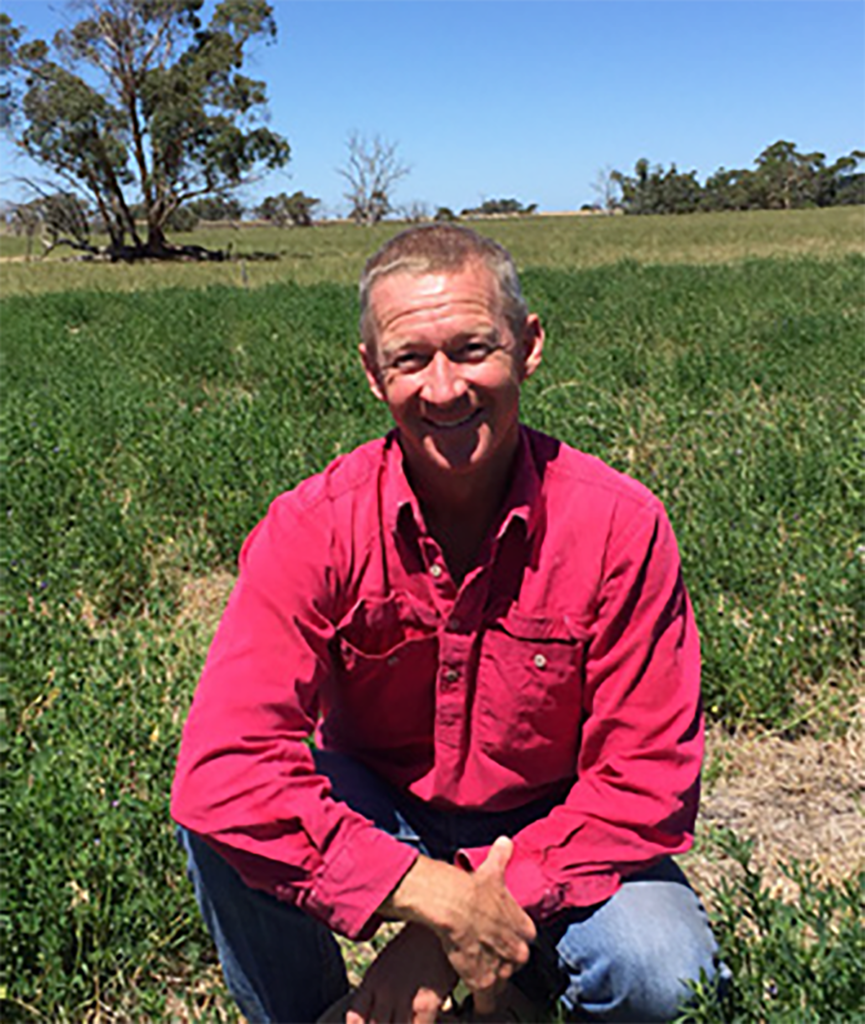James & George McKay, Egremont Pastoral Co at Egremont Pastoral Co soil health and its outcomes are recognised as the foundation of the property. James and Georgie McKay run their sheep and cattle enterprises with long term stock genetics, breeding and rotational grazing management practices.
“Our soil health is the basis of it all. The healthier soil produces better quality, productive pastures and healthier stock.”

Historically, pastures had annual applications of high analysis phosphorus fertiliser at increasing rates to
maintain pasture production. The concern for James was the high input of phosphorus and its subsequent tie up in the soil, creating a bank of under-utilised nutrient and a poor return on fertiliser investment each
year. “With so much P being applied and then becoming locked-up in the soil, I was sure there had to be a better way to do it. We also noticed over time our soils had become more acidic, reducing the availability of trace elements and othernutrients, it was important to address that.”
Inspections were carried out 4th of May in the Digest treated areas and showed the soil had opened up, while visually it was also noticeably holding significantly more moisture compared to the untreated stubble. The treated stubble is brittle to the touch, while the fungi was also visually present in some areas. The canola planted into the digest treated area has displayed more vigour and vitality.
This led to research into and use of alternative fertiliser inputs, including manures, with the objective to manage soil health and fertiliser outcomes. Throughout the process, James recognised it was important to continue addressing phosphorus requirements in-order to meet production levels. He also recognised the need for a more balanced approach to other nutrients. From 2010, James has applied pasture specific fertiliser BioGraze in autumn; the solid fertiliser blend combines a soil conditioning base of humic* (concentrated carbon) with phosphorus, calcium, sulfur, nitrogen, magnesium and essential trace elements. It is applied the same as for traditional fertilisers and can be spread using conventional ground spreaders.
“We continue to meet the phosphorus needs of pasture, however a balance of nutrients is important for soil health. The balance improves the pasture uptake of nutrients including phosphorus and other trace elements in the soil. We also wanted to encourage the microbiology in the soil for better root growth to access soil nutrients and grow healthier pastures.” Over the last five years James has seen indications the soil has improved water use efficiency and healthy pastures have resilience to insect pressure. “When there is significant rainfall it soaks in with less water lying around and in the dry months, pasture stays green for longer, extending our growing season. We have also noticed our pastures and Lucerne have better resilience to red legged earth mite and grasshoppers. The insects are present in the dry matter on
the ground but the pastures are not being affected.” Plant and soil test indicators support these observations. Higher sugar levels in the Lucerne plants are being measured with a refractometer (brix). Sugar levels are an indicator the plants are healthier which leads to better pest (insect) resilience and can also reduce the incidence of bloat in the cattle grazing on those plants. Soil analyses have shown the trend toward more acidic soils is reversing. In 2013 soil pH was below ideal, ranging from 4.7 to 5.9, recent soil analyses demonstrate soil pH is closer to neutral with a range from 5.3 to 6.9. There has also been a trend of building soil organic carbon levels over this time, which supports James’ observations of better water efficiency and extended growing season at Egremont Pastoral Co.

